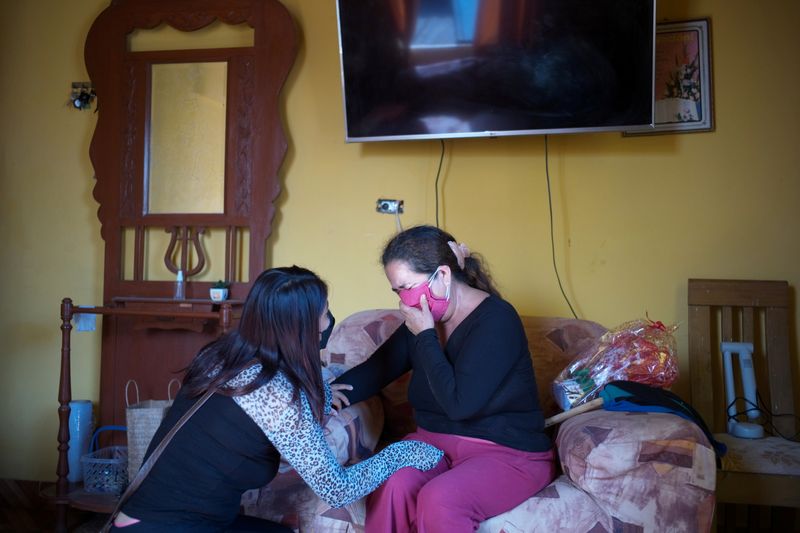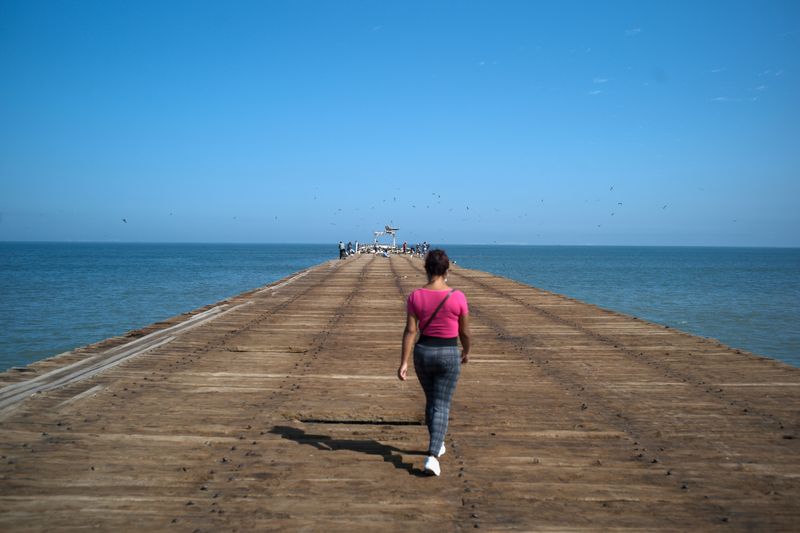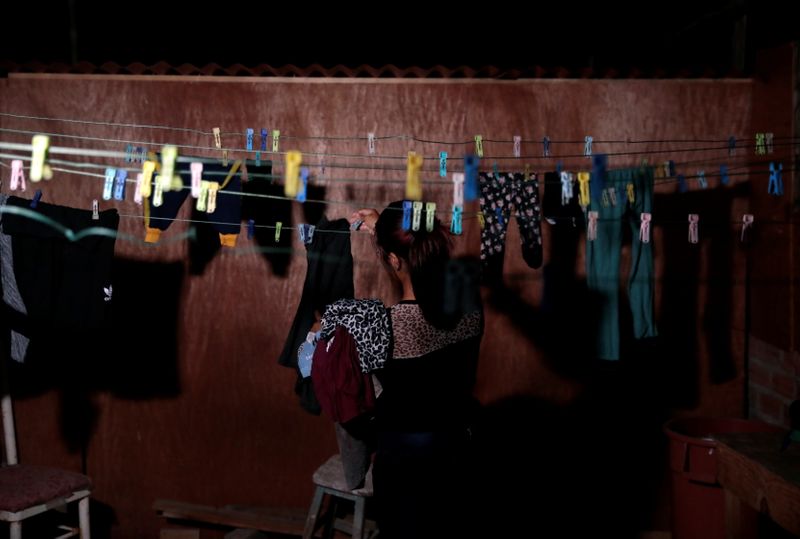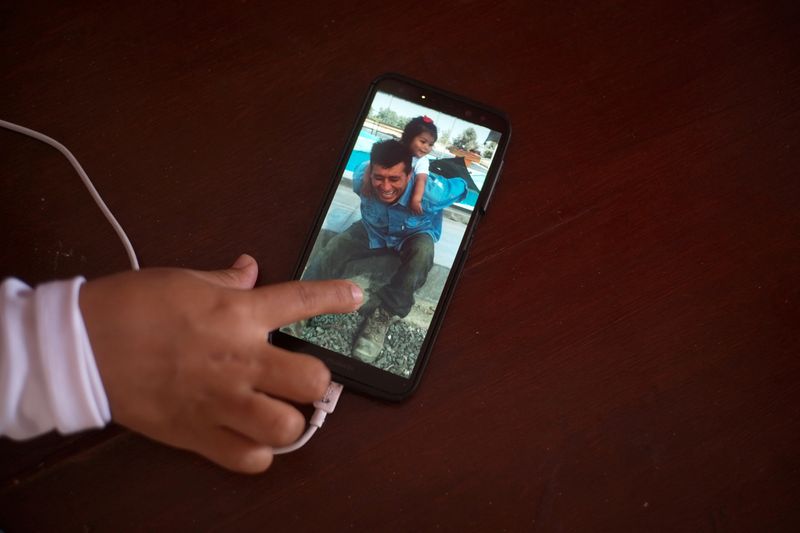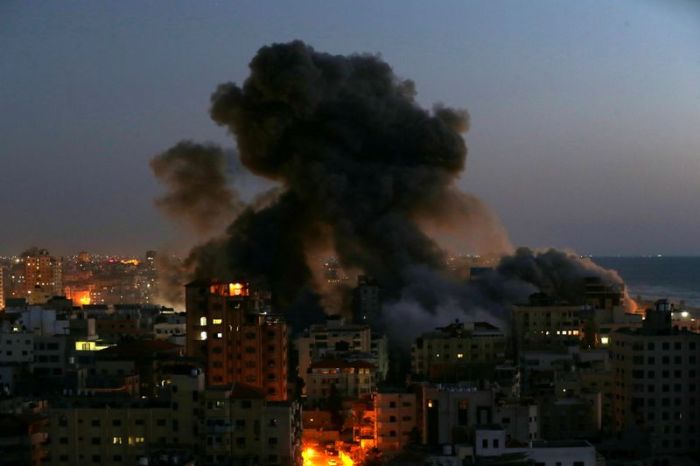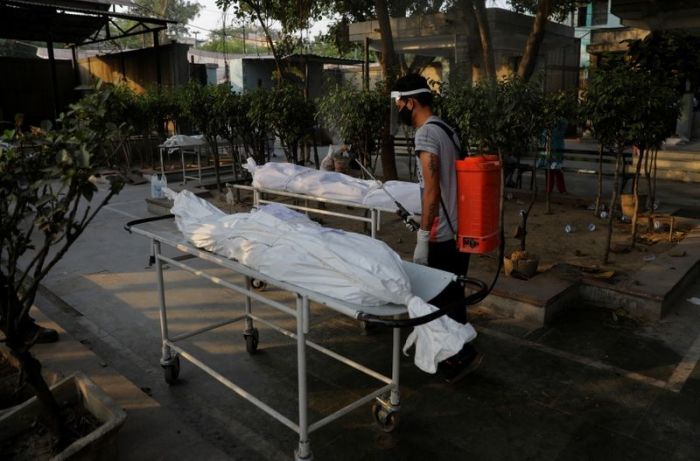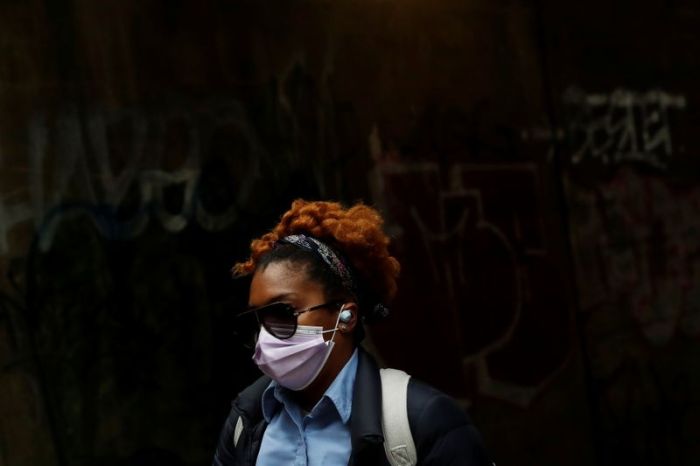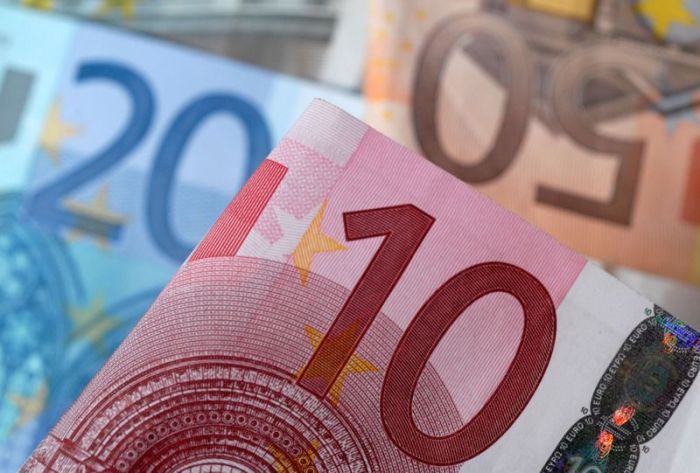PISCO, Peru (Reuters) -Hellen Ñañez has suffered enough tragedy for a lifetime. The Peruvian 28-year-old mother has mourned the death of 13 close relatives since the pandemic struck last year: uncles, cousins, a grandfather. Now her dad is fighting for his life.
On a recent day in a dusty cemetery in the Pacific port town of Pisco, Ñañez visited the graves of relatives lost to COVID-19.
“The truth is, I don’t have any more tears,” said Ñañez, who dropped out of studying psychology to work and help pay her father’s medical bills. “This is taking away our family. It’s taking away our dreams, our tranquility and stability.”
Ñañez’s story is a grim reflection of the tragedy unfolding in Latin America, a resource-rich but politically volatile region of some 650 million people stretching from Mexico to the near-Antarctic southern tips of Chile and Argentina.
The region has recorded 958,023 coronavirus-related fatalities, a Reuters tally shows, some 28% of the global death toll. It is set to hit the 1 million mark this month, which will make it the second region to do so after Europe.
But unlike wealthier Europe and North America, Latin American nations have lacked the financial firepower to keep people from sliding deep into poverty; underfunded healthcare systems have strained and inoculation programs have stalled.
Regional leaders from Brazil’s Jair Bolsonaro to Argentina’s Alberto Fernandez and Mexico’s Andrés Manuel López Obrador have come under fire for their handling of the pandemic, while a string of health ministers have been fired.
“We Peruvians are dying, Mr President. We are dying every day,” Miriam Mota, a relative of a coronavirus patient in Lima told Reuters, beseeching the country’s leader, Francisco Sagasti, to do more to help bring the crisis under control.
“There are no vaccines. There are no intensive care beds. There are no medicines. Please, for humanity’s sake, help us!”
Peru has officially confirmed 1.85 million COVID-19 cases and some 64,000 deaths, but that toll could be three times as high in reality, experts say. The country’s national death register has linked 171,000 deaths to the virus.
‘PEOPLE ARE FED UP’
Latin America’s crisis has been driven by regional juggernaut Brazil, which has recorded the most deaths globally after the United States and where right-wing President Bolsonaro has long railed against lockdown measures and backed unproven cures.
The emergence of virus mutations in the country, including the more transmissible P1 variant, has been linked to the severity of Brazil’s outbreak. It has also driven surges in infections in neighboring countries, including Uruguay and Bolivia.
Now there are signs that the pandemic, which has torn through regional economies and driven a spike in poverty, will have a longer-term ripple effect, stoking unrest, rattling industries and driving voters at the polls.
Colombia has been roiled by deadly protests over a now-shelved tax reform and poverty; Chile is moving towards a sharp tax hike on copper miners; Peru’s polarized presidential election race is being led by a socialist teacher who is a political outsider.
“People are fed up and obviously tired of everything that has happened lately,” Paula Velez said in front of a burned-out police station in Colombian capital Bogota, set on fire in the protests.
‘I DON’T WANT TO LOSE HIM’
Public health experts say Latin America has suffered an outsized hit from the pandemic, both in terms of health and growth, rattling fragile economies with high debt levels, steep inequality and where many work in less secure informal jobs.
Unlike North America, Europe or Asia, the region has also lacked the high-tech infrastructure to rapidly develop or manufacture vaccines.
A deal to produce the Oxford University-AstraZeneca Plc COVID-19 vaccine by firms in Argentina and Mexico has been stalled by manufacturing hold-ups, and many Latin American countries are reliant on insufficient supplies of Chinese and Russian vaccines.
A cottage industry has developed for wealthier Latin Americans to travel to Florida and Texas to get their shots. But for the less affluent, that is not an option.
“I have been looking for work for a year and a half and I can’t wait for my vaccine,” said Rio de Janeiro resident Marco Antonio Pinto, who like others in the city was disappointed last week when an immunization center quickly ran out of vaccines.
“They are playing with the people, thinking that we are animals. We aren’t animals: we are human beings. We pay taxes. We pay for everything,” he said.
Back in Peru, Ñañez is now fighting to save the life of her father, who has been in the intensive care unit of a hospital for more than two weeks, receiving medicine to reduce the ravages of the disease and on a mechanical respirator.
Ñañez, who has a two-year-old child, has turned to making soap at home and selling it on the street or in shops in Pisco, a coastal town set amid arid desert landscapes.
She said her bank loans had run dry and the family had incurred enormous debts of some 100,000 soles ($26,500) to buy medicines, medical oxygen – and funeral expenses. While hope was low, she was determined to battle for her dad.
“I’m not going to lose him. I don’t want to lose anyone else. My dad can’t leave me,” Ñañez said, sobbing, outside the hospital where she has come to check on the health of her father, who is in a coma.
“I have been standing here for 17 days in front of the hospital and I know that he is going to make it. I do not think that life can be so unfair if it has taken so much from me and now it also wants to take away my father.”
(Reporting by Anthony Marina in Pisco; Additional reporting by by Herbert Villarraga and Javier Andres Rojas in Bogota, Enrique Mandujano in Lima and Sergio Queiroz in Rio de Janeiro; Writing by Marco Aquino and Adam Jourdan; Editing by Adam Jourdan and Rosalba O’Brien)

